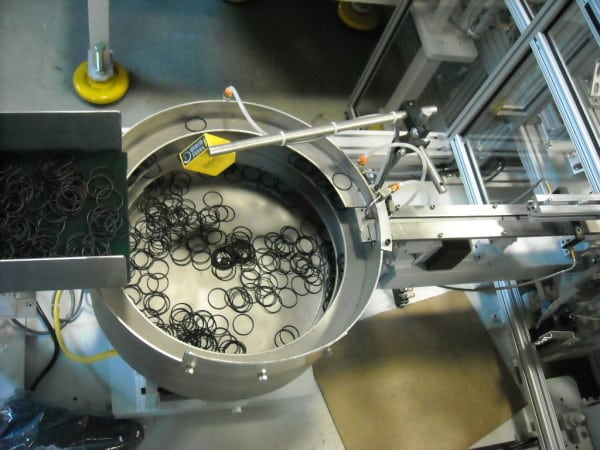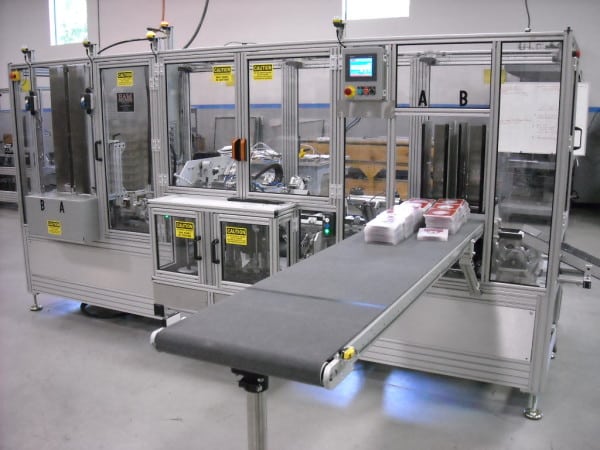Modern manufacturing environments consist of numerous industrial automated processes that are all designed to improve efficiency and increase production in order for companies to maximize their profit. Chief among such processes are the different types of mechanized feeding devices and feeding systems that are frequently used in automated production processes. For those companies in the stages of researching or designing various automation solutions for their production lines, here is a list of automated mechanical feeding devices to help operate your plant or facility more efficiently:
Vibratory Feeder Bowls

Centrifugal Feeders
The silent, vibration-free centrifugal feeder, also referred to as a rotary feeder, is used to feed components which can be processed at very high speeds. The design features a circular, bowl-shaped wall which surrounds a large rotating disc or plate that is driven by a central motor. The disc can be set at different angles, however, once it is in motion, parts are pulled to the wall of the bowl via centrifugal force. As the parts revolve, they are separated, emptied from the bowl and distributed for further processing at other workstations, e.g., for packaging or assembly. At a rate of up to a 1000 parts per minute, centrifugal feeders are used to process symmetrical parts with smooth geometries.
Linear Conveyor Systems

Hopper Systems
Hoppers, by definition, are used to store parts for further processing. In industrial production, hopper feeder systems are used to deliver parts to automated handling systems such as vibratory or centrifugal bowl feeders. A level control device allows for the feeding of a specified amount of parts from the hopper to the bowl at a given interval. Hopper feeders are utilized to prevent the overloading of bowls or to necessitate the need for the manual feeding of bowls. Hoppers come in a number of sizes and styles, such as straight wall, elevator, or inclined, with each design providing a constant metered supply of parts for processing.
Step Feeders
As the name suggests, step feeders use elevating plates referred to as steps to collect components and parts from an integrated hopper bin. The system is designed to presort and feed parts incrementally on to elevating steps until a desired transfer height is reached. Parts are deposited or dropped at the top of the step stroke onto a belt conveyor, air track or vibratory inline track for further processing. Parts that are not oriented properly are returned to the hopper bin by gravity slide or similar method of conveyance to repeat the process. The key design feature of step feeders is lifting single rows of bulk parts from a hopper by the step. They operate quietly and are vibration-free
Machine Vision Technology
Machine vision is a computerized, robotic guidance system that utilizes an integrated, imaging-based automated inspection and analysis technology. The technology can be used on production lines or for other related manufacturing activities. The system consists of several key components that interact to perform automated tasks. Computerized camera or multiple camera sensors are used to inspect and analyze components, parts or objects that are moving through a conveyance system. Programmed processing hardware and software algorithms then analyze imaging data captured by the sensors to apply process control of parts. Machine vision technology integrated system sensors capture images for inspection, which are then processed by a vision appliance that renders and communicates the results to system operators for appropriate action. Camera sensors can inspect the accuracy, position, shape, size, colors, or barcodes to ensure the item is processed correctly.
